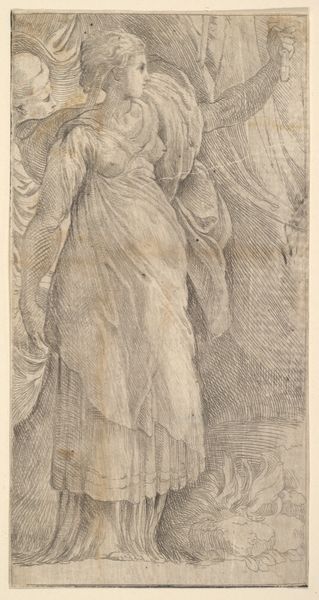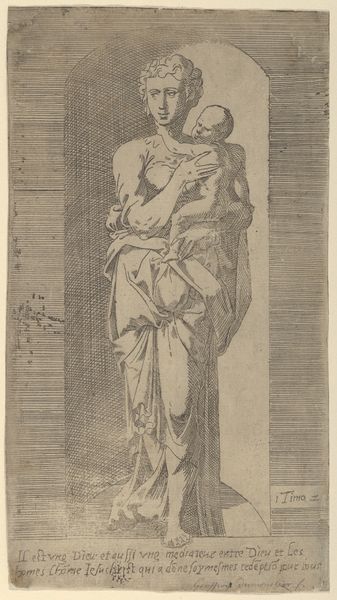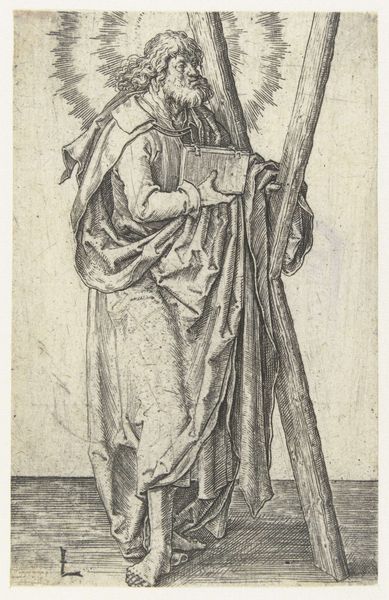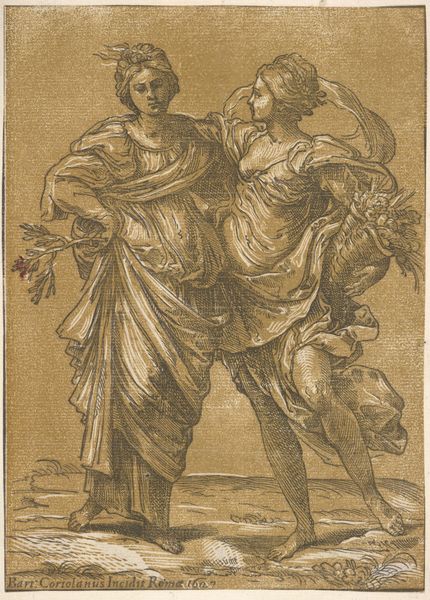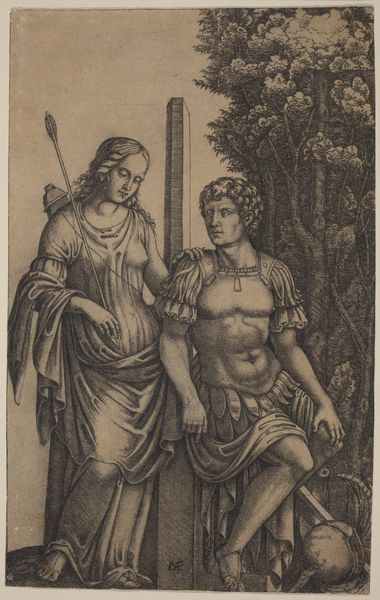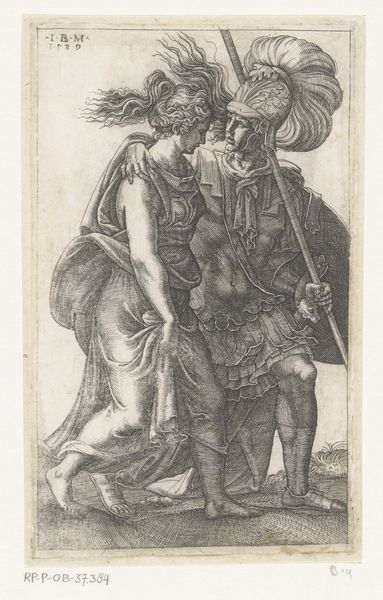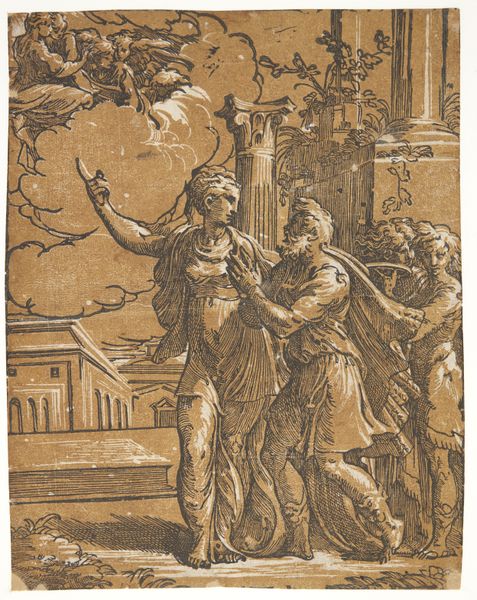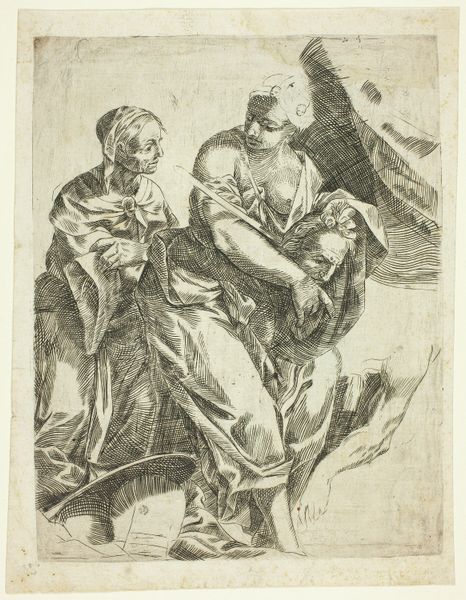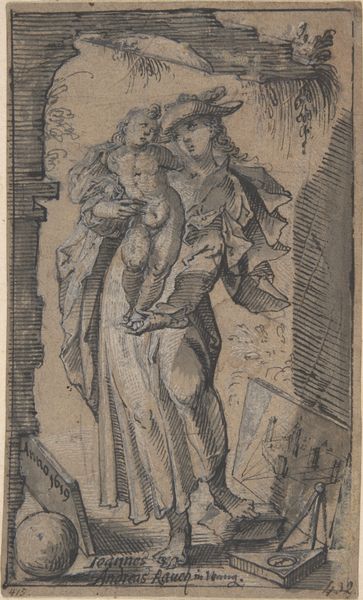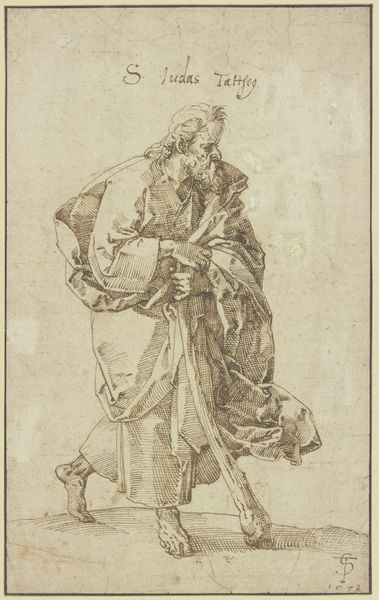
drawing, print, engraving
#
drawing
# print
#
figuration
#
11_renaissance
#
history-painting
#
italian-renaissance
#
engraving
Dimensions: Sheet: 8 1/4 × 5 1/16 in. (21 × 12.8 cm)
Copyright: Public Domain
Editor: Here we have Girolamo Mocetto’s "Judith with the Head of Holofernes," an engraving from the early 16th century. I’m struck by the starkness of the image and how Judith is almost nonchalantly displaying Holofernes' head. What symbols are at play here, and how does the image resonate beyond the immediate story? Curator: Absolutely. The image of Judith holding Holofernes' head is a potent symbol of female strength and resistance to tyranny. Throughout history, it appears as a constant story. Mocetto’s artistic choices further enhance these symbolic readings. Look at Judith’s expression. It's not triumphant or vengeful. Does this perhaps suggest the psychological toll of such an act, the weight of responsibility that comes with being a savior? Editor: That’s a good point; I was focused on her pose, but the lack of explicit emotion is interesting. Then what is the meaning behind Judith's gaze downward and the older woman’s gaze upward? Curator: Well, let’s think about gazes more broadly as they function iconographically in Renaissance art. Judith’s gaze connects her to the head, acknowledging her action and it’s ramifications. The upward gaze of her companion speaks to divine justification or a hope for redemption. She is less centered in this action, so is able to look forward and look upwards. Think about this imagery during the Reformation, too, what might a story about defying earthly rulers mean at this time? Editor: That makes perfect sense. It also gives a lot of context. I hadn’t really considered it from that Reformation perspective, adding more complexity to its interpretation. Thank you! Curator: Of course! Considering the cultural memory and the image’s evolving symbolism really enriches our understanding. It is rewarding to view how different narratives appear during different epochs.
Comments
No comments
Be the first to comment and join the conversation on the ultimate creative platform.
